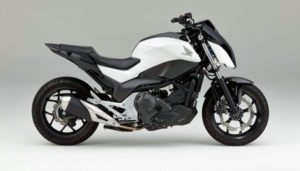Increasing number of vehicular accidents has lead manufacturers and engineers to question the role of technology in safety and reliability. Sometimes, practicing safe and responsible driving alone doesn’t prevent accidents from happening. Our technologies require a revolution of sorts from the engineering perspective. And industries and technologists need to play a huge role in this if they want to attract more consumers and make their technologies more relevant in solving modern-day problems. One such company that is looking to out-innovate all other companies and provide safer options for drivers is Honda which recently released its concept technology, “Riding Assist”.

Honda Riding Assist Bikes
In January 2017, Honda unveiled its brand of self-balancing bike, which uses a patented technology (Riding Assist) hailed as the second biggest revolution in the automotive industry after Google’s self-driving cars, in the Consumer Electronics Show (CES) 2017, Las Vegas, USA.
Honda’s Riding Assist is a system that allows it to balance the vehicle at slow speeds without the use of gyroscopes. This is achieved by raking the motorbike’s two front forks and then uses minute steering inputs to keep the bike balanced just like a cyclist would do to balance themselves at low velocities.
Behind The Scenes
Honda was inspired by its own AI, ASIMO, robot which uses a similar balancing method, in building this unique piece of leveraging technology. Its UNI-CUB scooter, too, served as a basis for the metamorphosis to Riding Assist.
Balancing bikes at high speeds may seem like a more logical innovation but that has already been done by several companies (most of them using stabilization-assist technology). But balancing at low speeds is an often overlooked premise. And Honda intends to reduce fatalities that occur due to low-speed accidents.
How It Works
Riding Assist converts the motorbike’s front fork suspension from a standard geometrical position to a steep-angled locus which resembles that of a sports bike. The steep angle allows for a balance between the z- and x- components of forces, lengthening the wheelbase and disconnecting the forks from the handlebars, thereby stabilizing the bike and preventing it from tipping. This is achieved by a dedicated motor attached to the front wheel.
This isn’t, however, the first time self-balancing technology has been revealed in concept vehicles. BMW rolled out its own version of the technology and was more futuristic. But Honda benefits from keeping its design contemporary. In fact, it looks like a production quality bike that can be rolled out anytime, but Honda hasn’t declared any official dates.
With Riding Assist, Honda does away with bulky gyroscopes that make it difficult for the vehicle to maneuver. Instead it uses simple robotics and fewer devices to achieve the goal.
This crossover of robotics and automobile, much like Google’s self-driven car, will lead to a bigger change in the way our vehicles are manufactured and in the number of fatalities and accidents that occur on roads.
